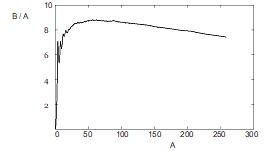Mass defect

The mass defect is the difference between the mass of an object and the sum of the masses of its constituent particles. The binding energy which holds the constituent particles together, is actually the missing mass. The binding energy per nucleon shows a maximum at mass number A ≈ 60 (see Figure). This means that energy can be gained by splitting heavy atoms, but also by fusing light atoms.
History
The mass defect was first used to make bombs: in July 1945, the first atomic bomb was detonated in the New Mexico desert, followed in November 1952 by the first hydrogen bomb on the Enewetak Atoll in the Northwestern Pacific Ocean. This was later followed by the peaceful application of power generation.
Related concepts
| Last modified: | 07 April 2024 9.02 p.m. |
View this page in: Nederlands
